Native Plants 101: Everything You Need to Know
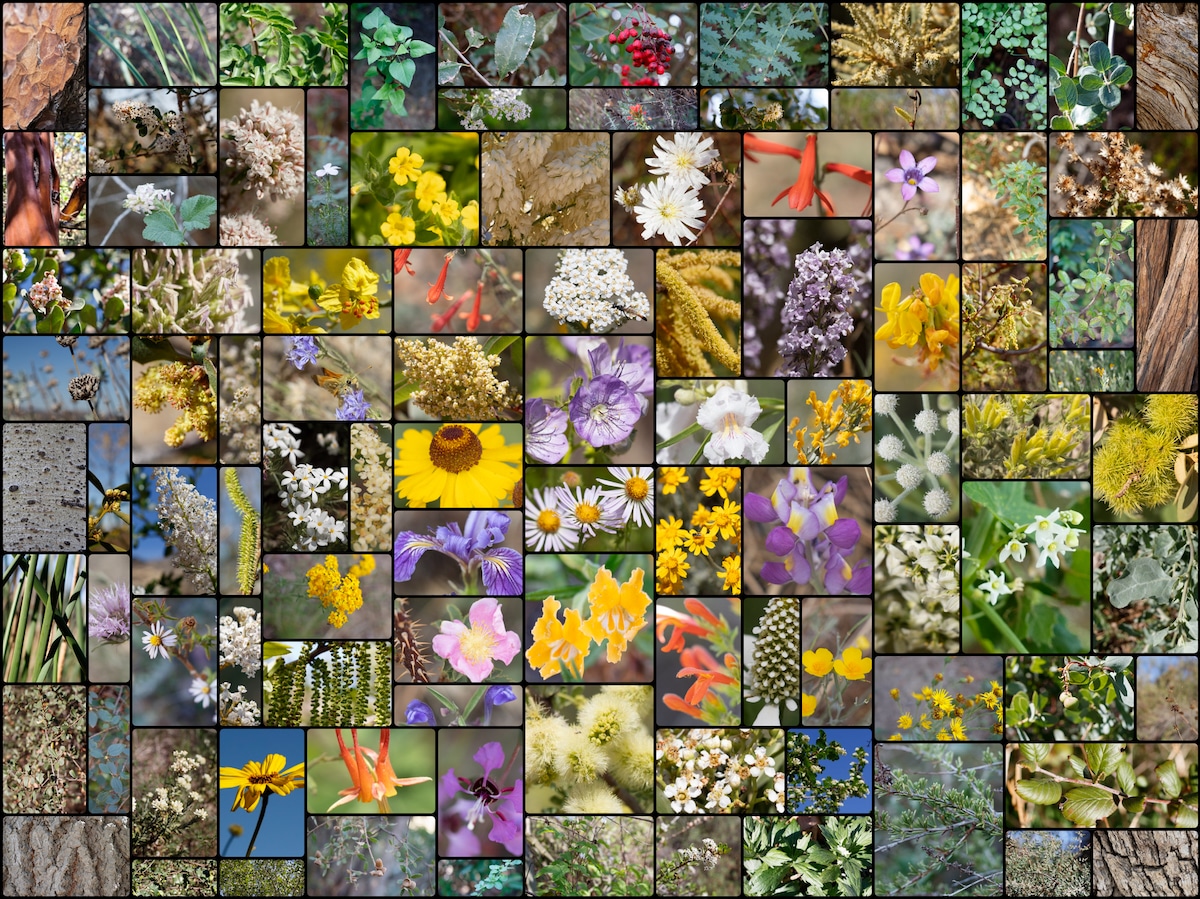
 Why you can trust us
Why you can trust us
Founded in 2005 as an Ohio-based environmental newspaper, EcoWatch is a digital platform dedicated to publishing quality, science-based content on environmental issues, causes, and solutions.
Quick Key Facts
- Native plants are plants that have been growing for thousands of years or longer in particular regions on land and in the sea, without being introduced by humans.
- Native plants support pollinators by providing nectar for hummingbirds, native bees, butterflies, moths, bats and others. They support other wildlife by providing critical habitat and essential food.
- Native plants have evolved for survival and tend to be more naturally adapted to local growing conditions. Due to deep roots that withstand long periods of dry weather, they are drought-resistant and require little or no watering after they are established.
- Since native plants adapt to their ecosystem’s soil, whether it be poor or fertile, they can survive from what nutrients are available without the aid of fertilizer.
- Native plants require fewer pesticides because they are naturally resilient against pests.
- Native plants contribute to regular ecosystem functions such as water purification and flood control.
- Native plants absorb air pollutants and sequester carbon to help mitigate climate change.
- Native plants in the U.S. are under threat from habitat loss, construction, overgrazing, wildfires, invasive species, bioprospecting — the search for plant and animal species from which medicinal drugs, biochemicals and other commercially valuable material can be obtained — and climate change.
Benefits of Native Plants
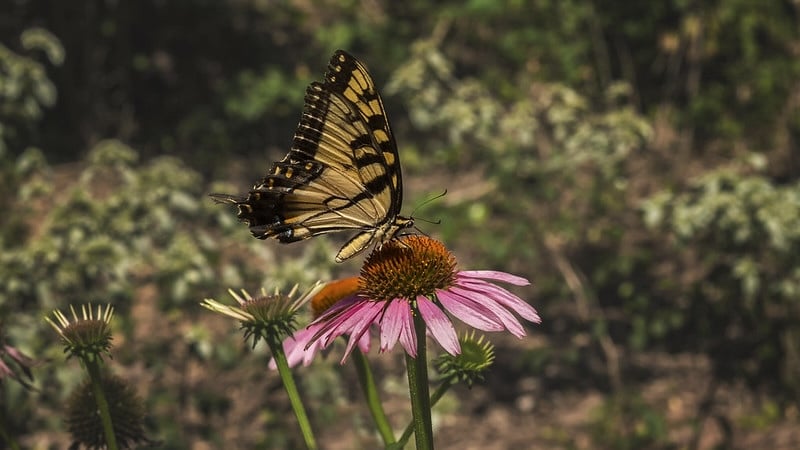
A butterfly feeds on a native coneflower in a pollinator garden of the East Decatur Greenway in Decatur, Georgia. Thomas Cizauskas / Flickr
Native plants are indigenous plant species that evolve naturally on land or in the water, and are an integral piece of thriving ecosystems, providing critical habitat for insects, birds, mammals and other animals that form an interconnected web of mutually beneficial interactions.
They have a host of other benefits — something one might consider when it comes to what is grown in the yard.

A front yard featuring native plants instead of a lawn. California Native Plant Society / Flickr
They require much less maintenance by using less water. According to a study by the U.S. Environmental Protection Agency in 2017, one-third of water for residential use is for landscape irrigation. Because of native plants’ deep root systems, they don’t just require less water, but it makes them drought tolerant, and slows down the flow of water that in turn helps prevent soil erosion, flooding and surface runoff that can lead to the pollution of waterways.
The root system acts as a filter for pollutants. Silver birch, yew and elder trees have been found to trap up to 70 percent of particulates in the air.
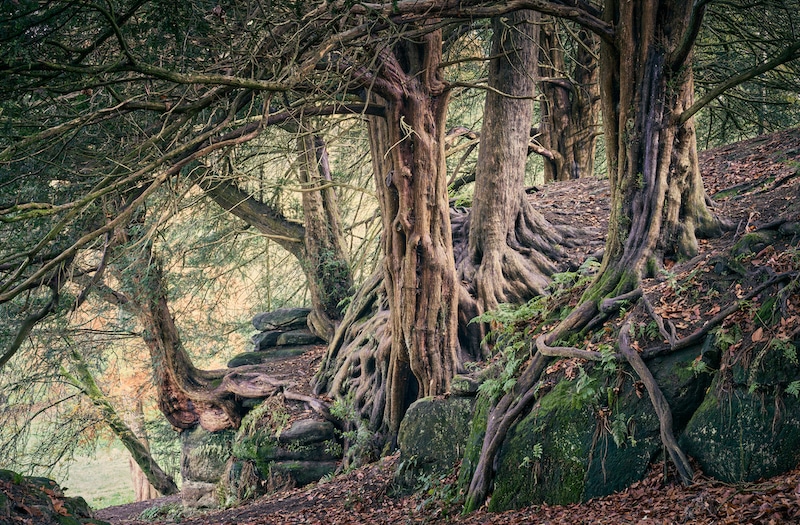
An ancient yew tree forest in the UK. Matthew J Thomas / iStock / Getty Images Plus
Native plants will save you money on fertilizer, since they adapt to the nutrients in the soil, whether depleted or nutrient rich. They also don’t need pesticides, having developed natural resistance over time.
In terms of climate mitigation, they sequester carbon dioxide in the atmosphere to help mitigate climate change.
Impacts of Non-Native and Invasive Plants
To those not aware, non-native plants, and invasives (which is what non-natives are called after they rapidly grow and spread over large areas) look pretty innocuous, but they wreak havoc on the ecosystem.
Invasive plants arrived with colonization. According to a 2020 study, researchers quantified 65 plant species, subspecies and varieties that have been lost forever in the wild since Europeans arrived.
Invasive plant species aggressively compete with native species, and typically outcompete them, leading to potential extinction of not only the native plants, but the animals and their habitats, as well as food sources. Some non-native plants produce chemicals in their leaves or root systems that inhibit the growth of other plants around them, which results in reduced biodiversity, increased erosion and genetic alterations of native species through hybridization.
Invasive plants affect water availability and damage soil nutrients, by decreasing water flows and reducing the transportation of nutrients. This can also increase runoff and create erosion.
Some are fire hazards. For instance, cheatgrass, which was brought over by European colonizers in the 1800s, is flammable and can cause more intense and frequent wildfires. Cheatgrass is found in at least 49 states, and is mainly a problem in the semi-arid Great Basin.
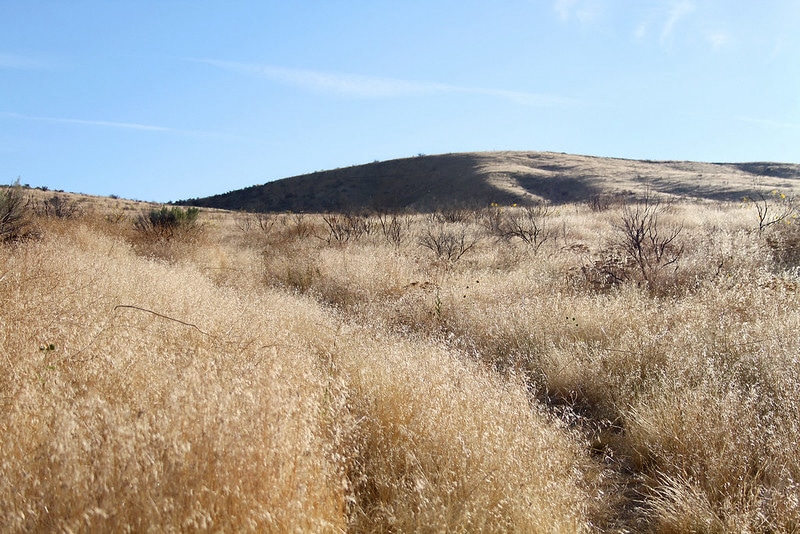
Invasive cheatgrass on sagebrush steppe rangeland. Jaepil Cho / U.S. Fish and Wildlife Service
Research shows that non-native plants also contribute to the global insect decline.
An analysis of 76 studies of caterpillar health on native and introduced plants found that caterpillars were larger and more likely to survive when reared on their native host plants. Some pollinator species have seen a 90 percent decline in their populations over the last decade, part of which is attributable to invasive plant species.
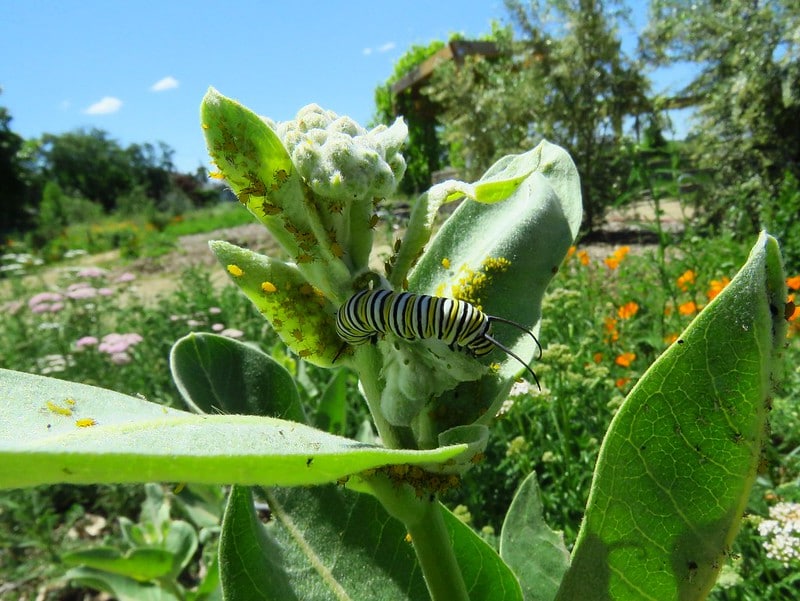
A monarch caterpillar on a native showy milkweed plant. Jim Wadsworth / California Native Plant Society / CC BY 2.0
Invasive plants also affect human health by providing habitat for vectors of disease. For example, Japanese barberry was introduced into the states in the late 1800s as an ornamental plant. Now it exists across 30 states and forms dense thickets that are favored by deer ticks that cause lyme disease.
Native Plants at Risk
The Center for Plant Conservation reports that nearly 30 percent of the native flora in the U.S. are considered to be of conservation concern.
Besides competing with invasives, native plants over the last several decades have been up against several other conditions that threaten their existence. The following are some of the major concerns.
Climate Change
Higher temperatures cause native plants to experience heat-related stress, which causes higher water demand. Higher amounts of carbon dioxide in the atmosphere promote growth of invasive plants that box native plants out of their spaces.
Longer growing seasons also cause earlier bloom times, which affects the animals synced up to the life cycles of the plants, such as pollinators. Plants in tidal habitats also have to cope with sea level rise. It is said some species will evolve in response to climate change. Native plants in certain regions have adapted thus far.
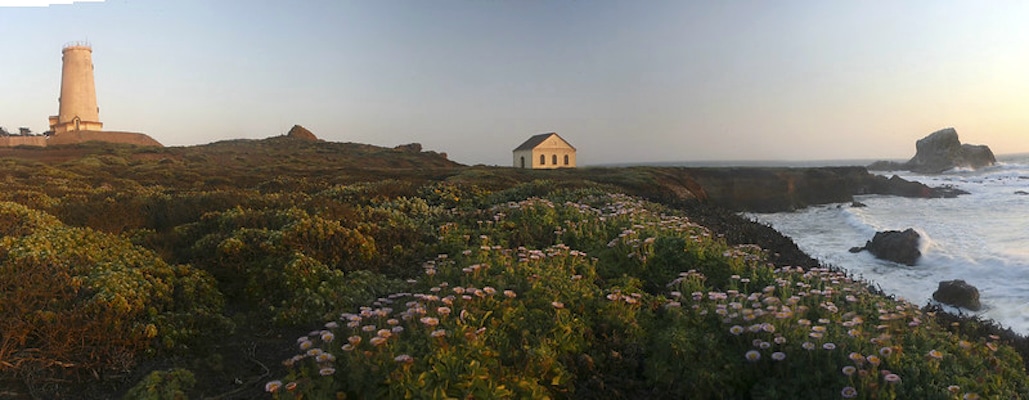
More than 70 native plant species can be found on the 19 acres surrounding the Piedras Blancas Light Station on California’s central coast. Bureau of Land Management
Habitat Destruction
The continental U.S. has lost 150 million acres of habitat and farmland to urban sprawl. Manicured lawns cover over 40 million acres, none of which supports functioning ecosystems.
Bioprospecting
Bioprospecting is the search for useful products derived from plants, animals and microorganisms that can be developed further for commercialization. Some examples include the poppy seed for morphine and the white willow tree that helped develop aspirin.
Often, this doesn’t just result in what is called biopiracy — which involves the appropriation of plants and cultural knowledge, where corporations use Indigenous people to locate biological material that has a medicinal purpose, then bring it back to the lab and patent it as their own invention without proper compensation or acknowledgement. It also can deplete resources from overharvesting native species that could lead to local extinction. Medicinal plants are especially vulnerable to this.
Native Plant Restoration Projects
There are several native plant restoration projects across the country. Here is a small selection.
Great Basin Sagebrush Project
Part of the Sustainability in Prisons Project, this environmental partnership between the Institute for Applied Ecology, Department of Corrections and the Bureau of Land Management provides unique and meaningful ecological activities to incarcerated men and women with the goal of restoring sagebrush habitat in the great basin region through a multi-state grow out initiative.
Native Plant Trust
Based in Framingham, Massachusetts, as one of the nation’s first plant conservation organizations, the Native Plant Trust saves native plants in the wild, grows them for gardens and restorations and provides education initiatives on their values and uses.
Mattole Restoration Council
This community-led watershed restoration organization in California, restores and conserves ecosystems on the Mattole River. One of their projects is to produce native plants through collecting seed from a mix of locally adapted native plants throughout the Mattole Watershed and King Range National Conservation Area and are grown at their Native Plant Nursery and Native seed farm.
Back to Natives Restoration
California-based Back to Natives promotes the use of locally native plants as well as habitat restoration and preservation by providing service learning and volunteer-based habitat restoration programs. They also design, install and maintain locally native landscapes for homeowners and businesses with all proceeds supporting their environmental education and habitat restoration programs.
Malama Pupukea Native Hawaiian Plant Coastal Restoration Project
This O’ahu-based nonprofit educates residents of Hawai‘i and visitors to the Pūpūkea Marine Life Conservation District about the importance of this special area’s marine life and protected status. In an effort to help reduce erosion and sedimentation at Sharks Cove, they started the Native Hawaiian Plant Coastal Restoration Project.
National Park Service: Santa Monica Mountains
Over the course of two years, 3000 volunteers helped restore 100,000 native plants (10,000 trees and 90,000 herbs and shrubs) to five sites in Santa Monica Mountains National Recreation Area.
Native Plant Sanctuaries
Since many native plant species are at risk because of habitat destruction, invasive species and climate change, many have set up plant sanctuaries to help preserve and protect these species by providing a protected area for growth.
There are several throughout the United States.
For example, Maine is home to a wildflower reservation that is open to the public and contains 100 wildflower species over 177 acres. Hobbs Fern Sanctuary in New Hampshire has 250 acres filled with 40 varieties of native ferns. In Vermont, there is a bog sanctuary on 41 acres with boardwalk access, and in Pennsylvania the Department of Conservation and Natural Resources creates 35 secret sanctuaries across the state.
Policy
The Endangered Species Act of 1973 has provided some protections and recovery for imperiled species of plants, but the plants are only protected on federal lands.
Since then, the USDA’s Forest Service created a policy (FSM 2070) in 2008 designed to combat invasive species and mitigate the impacts of climate change and maintain healthy forests. The policy stipulates that native plants will be the first choice in revegetation for restoration and rehabilitation of native ecosystems, where native plant communities might not regenerate naturally on their own.
Other legislation has been state by state.
In Maryland, the senate passed House Bill 322, which compels Homeowners’ Associations (HOAs) and other organizations to allow “low-impact landscaping” such as rain gardens, native plant gardens, pollinator gardens and xeriscaping in subdivisions. The law also forbids an HOA from requiring yards consisting of turf grass.
The bill was led by a homeowner in Howard County who experienced harassment from her neighbors and her HOA over planting a pollinator garden. The HOA hired a law firm to force her to replace it.
In 2017, New Jersey adopted a bill that requires the Department of Transportation and other authorities to use native plants on roadway landscapes.
In Hawai’i, Act 233 was passed and requires that, whenever possible, Hawaiian plants known to occur on a particular island will be used for landscaping in that particular place, and shall be sourced from that same island.
There are also laws in Hawai’i against protecting threatened and endangered plant species. To cut, collect, uproot, destroy, injure or possess any part of a threatened or endangered plant is considered a “take” and is illegal.

The Haleakalā silversword is endemic to the island of Maui, Hawai’i and listed as threatened on the IUCN red list. Vince Barnes / iStock / Getty Images Plus
Several other states declared proclamations for native plant month.
Overall, though, it is said that at-risk plants have less conservation funding and legal protection than animals in the country. Plants are also only safeguarded on federal lands, not private.
What Can You Do to Help?

Volunteers work to help native plants grow at the Native Seed Farm in Irvine, California on March 27, 2019. Paul Bersebach / MediaNews Group / Orange County Register via Getty Images
Plant native species in your garden to replace your lawn.
Advocate for native plants in your town’s public spaces, and push for state legislation to reduce pesticide use to save pollinators.

Landscaping around roads near a Park Ridge, Illinois hospital includes native plants. Center for Neighborhood Technology / Flickr
Join a local group working to control invasive plants.
Don’t pick flowers or dig up native plants.
If you are hiking, camping or climbing, check all of your gear for seeds caught in your belongings to help the spread of invasives.
Growing Your Own
To help figure out what to grow where, these three resources will help you find what’s native to your area, just by typing in your zip code:
National Wildlife Federation’s Native Plant Finder
Homegrown National Park Native Plant Finder
Audubon’s Native Plants Database

Native plants at the Marys Peak Area of Critical Environmental Concern in Benton County, Oregon. Bureau of Land Management
Subscribe to get exclusive updates in our daily newsletter!
By signing up, you agree to the Terms of Use and Privacy Policy & to receive electronic communications from EcoWatch Media Group, which may include marketing promotions, advertisements and sponsored content.

 233k
233k  41k
41k 